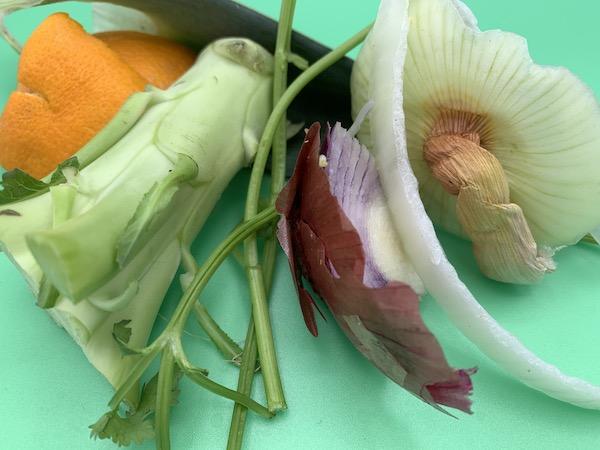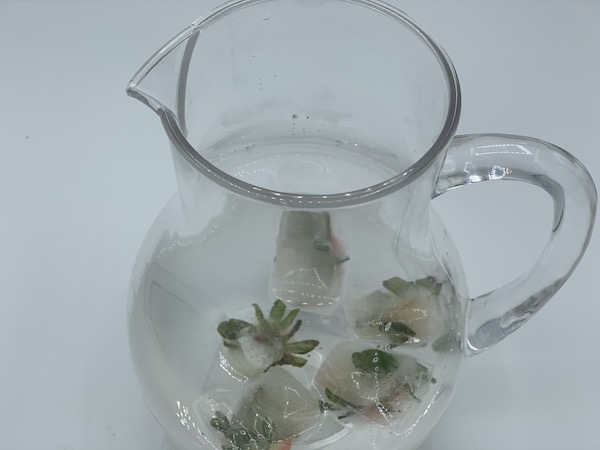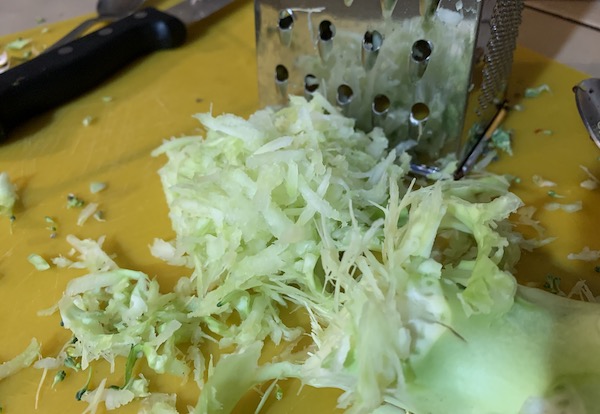Using Food Scraps
Making Use of Entire Fruits and Vegetables
It takes lots of energy sources to grow vegetables. Therefore, all parts of vegetables should be respected. Every part of most every vegetable can serve some sort of edible purpose if handled properly, but there are exceptions to every rule so make sure to read all sections of this post as there are some dangerous parts that need to be avoided.
Let’s check out some ideas for using parts of different fruits and vegetables that many people constantly overlook. Here are some suggestions to get the most mileage out of all the little produce scraps in a kitchen, ones that may currently just be getting tossed.

Using Food Scraps
Identify Useful Food Scraps
The first step in figuring out what to do with food scraps is to find a use for each of them so that they are not viewed as actual scraps. Let’s explore some items that are most often considered scraps, and subsequently tossed, to see if they can actually be used for food value. We’ve sectioned off the fruit scraps from the vegetable scraps in the next sections.
When arriving home from the produce store or farmers market consider each vegetable before finding it a place in the kitchen. Just as some produce thrives in cold storage, others thrive just as well when stored on the counter (for instance tomatoes). Some vegetables should be disassembled right from the start, as storage needs of one part can differ from the other part. The shelf lives of individual parts may also vary, and we all know by now that proper storage is key to extending shelf life.
Keep in mind a couple of things before continuing with this article. One is that the skins of fruits and vegetables may seem a bit nasty to eat, but this part of the produce actually contains the highest concentration of vitamins and minerals. The other thing to remember is to always wash fruits and vegetables, whether or not the skins are being used.
We always at least try to live by the 5 R’s: Refuse (don’t buy things without an intended purpose), Reduce (the waste), Reuse (repurposing when necessary), Recycle (everything possible) and lastly, when all else has failed, Rot (meaning compost all true food scraps – an article is coming soon on this). We’re going to focus on fruits and vegetables for this post, but keep this philosophy in mind for all foods that ever enter the kitchen.
Using Food Scraps
Using Fruit Trimmings
These skins are tossed more often than anything. But citrus zest sounds so snazzy! Not called for all that often in recipes, but a little can actually go a long way in elevating a baked good, a cocktail or any food that could benefit from a twist of citrus flavor. Try tossing strips of the zest – only the colored part, never the white part (called pith) – into a sugar water mixture and boil it for a few minutes for a delicious tasting syrup. Use these simple syrups to flavor cocktails or sodas. See our simple syrup recipes for details.
This fuzzy skin isn’t too pleasant to eat while enjoying a kiwi, but if a potato peeler is used to remove the skin then the tiny pieces can be thrown into a tossed to salad to add a nice lemony flavor without ever noticing the fuzzy texture.
Ice cubes can also include food scraps such as strawberry tops. Simply place a top into each ice cube tray hole and then fill with water and freeze. These look pretty and then also will add flavor to the drink as they melt.

Another way to incorporate fruit scraps into most anything is to dehydrate them. If you don’t have a dehydrator then bake things like apple skins and orange peels in a single layer in a 200°F oven until they get hard and curl. They can then be ground and combined with either salt or sugar to use as a flavorful topping to countless dishes. Try lightly moistening the rim of glasses and then dip them into this mixture for an extra bit of flavor with each sip taken.
Using Food Scraps
Using Vegetable Trimmings
Tough asparagus stems, when cooked long and slow, can be blended into a tasty asparagus soup.
These can be sprayed lightly with olive oil and then roasted in the oven. They come out like a huge but thin and crisp potato chip, an interesting snack in both looks and taste.
Blanch broccoli stems and then top them with herbs and breadcrumbs. Another great way to use up broccoli stems is to use a shredder and shred them to make a broccoli slaw (similar to Cole slaw).

Add a few seeds, maybe some Craisins, and a sweet salad dressing and you’ve got a salad to enjoy or share… from just one broccoli stem!

Broccoli leaves are also edible, they can be cooked and eaten just like collard greens.
These can be used to make pesto sauce. Use them instead of purchasing parsley for decor on a plate or for adding into a nice green smoothie.
Cauliflower stems can always be used right along with the flowers, but chopped a little finer than the flowers since they will take slightly longer to cook. The entire cauliflower is used to make both cauliflower rice and mashed cauliflower. And, just like broccoli the leaves are also edible.
Celery leaves help add moisture and texture to recipes such as stuffings. Keep this in mind when Thanksgiving rolls around.
Don’t waste time pulling off just the leaves from this herb. Instead finely chop through the entire plant (well, maybe not the very bottoms), stems and leaves together at once. They are both quite tasty and no one will know the difference if you’ve got some knife skills.
People generally use up parsley and basil leaves, but the mass of these herbs is the stems. Blend stems into pesto and other sauces or smoothies for added green nutrition.
Mint stems add refreshment to plain water all day long. Our favorite drinking water comes from a pitcher of plain water where mint stems and cucumber skins have lingered.
Throw veggie scraps, such as cucumber peels, into an ice cube tray and fill with water. They look pretty in a glass and then also will add a nice flavor to the drink as they melt.
Blanching kale stems will soften them up so that they are both edible and delicious.
Raddish stems will add a peppery flavor when tossed into a salad.
Mixed vegetable scraps can also be placed under a chicken or other roast before placing it into the oven to give the protein more flavor and aroma as it is roasting. The tips that are cut from carrots, onions and celery are perfect additions under roasted meats.
If using up these parts of vegetables
doesn’t appeal
(although judgement should be held until after
trial):
At least keep various scraps of various vegetables
in a freezer safe bag or a jar stored in the freezer
and keep adding to the mix as vegetables are used.
When enough have been gathered them simply place the
mixture in a pot with water and boil them for a
homemade stock! Either pour the broth through a
strainer after boiling to make a nice vegetable
broth or blend it all up to make a thicker soup
base.
Using Food Scraps
BEWARE: Never Assume All Produce Parts are Usable
Should all parts of all vegetables be
eaten?
Like most anything else, there are usually
exceptions to the rule. Not all vegetables are like
broccoli and cauliflower where all parts can be
used. There are, of course, some vegetables where
all the parts should not or cannot be eaten. Some
vegetables, such as wild mushrooms, are difficult to
distinguish and therefore should be completely
avoided (unless you are a specialist on the
subject). Some vegetables consist of both edible and
toxic parts. Also, some vegetables can be poisonous
raw but harmless when cooked properly. The important
thing to remember is that all parts of a vegetable
are not created equal, so they may or may not be
edible.
There are some produce parts that are indeed better off in the compost pile, following are a few worth mentioning:
Using Food Scraps
Additional Info
Wondering what citrus zest is? Then read about zest. If making citrus zest, check out this genius way to zest.
Leftover pickle brine? We’ve got a whole post on this one, see our suggestions for what to do with leftover pickle juice.
After grating all the parmesan cheese possible, make use of that rind.
Here are a few more trash foods that should be re-considered before tossing away.










